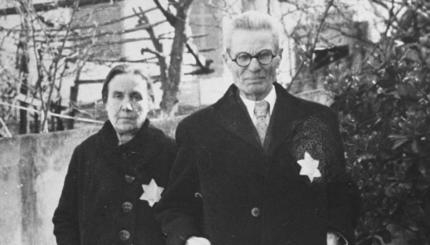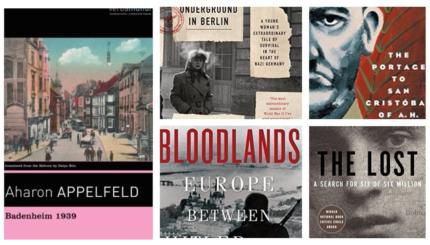Reprinted with permission from Jewish Family and Life: Traditions, Holidays, and Values for Today’s Parents and Children, published by Golden Books.
When Charlene Schiff turned 11, she had survived three years on her own, living in a forest in the Ukraine. By night she foraged in nearby barns for food; by day she hid in shallow holes she dug, covering herself with leaves. At 11, Charlene was a veteran of the forests, maintaining a routine that ultimately saved her life. For those three years she lived by her wits, eating anything that came to hand, worrying about what happened to her family, constantly moving from one hiding place to the next in a frantic race to evade the German armies who patrolled the countryside. She forgot the sound of her own voice, for she never spoke, not even to herself.
When Jewish-American children turn 11, they stand on the threshold of independence, looking ahead with excitement to the wonders of middle school and the bar and bat mitzvah. They forage in the refrigerator for snacks, and hide from their siblings in their rooms. At 11, our children are veterans of Hebrew school and soccer fields, maintaining a routine of activities, which will ultimately be listed on college applications. They worry over changes in their bodies. They constantly move from one best friend to the next. They are in a frantic race to keep up with their own busy lives.
 Our children’s lives are far removed from the terrors of the Holocaust. Many of them have no firsthand knowledge of survivors. Indeed, many have never been touched directly by anti-Semitism. As Americans, our national passion is to prolong our children’s childhoods; as Jews, our natural instinct is to protect our children from the existence and history of anti-Semitism. How, then, do we address with them an event of such enormity as the Holocaust, and when do we start?
Our children’s lives are far removed from the terrors of the Holocaust. Many of them have no firsthand knowledge of survivors. Indeed, many have never been touched directly by anti-Semitism. As Americans, our national passion is to prolong our children’s childhoods; as Jews, our natural instinct is to protect our children from the existence and history of anti-Semitism. How, then, do we address with them an event of such enormity as the Holocaust, and when do we start?

Help us keep Jewish knowledge accessible to millions of people around the world.
Your donation to My Jewish Learning fuels endless journeys of Jewish discovery. With your help, My Jewish Learning can continue to provide nonstop opportunities for learning, connection and growth.
While no one set of definitive answers exists, there is a general consensus among Holocaust educators. “Teaching about the Holocaust before the age of eight is counterproductive. Children will only come away with nightmares,” says Shari Werb, an educator with the U.S. Holocaust Memorial Museum in Washington, D.C. “Even eight is very young, unless the family has first hand experience and there is a reason to talk about it.”
Ms. Werb says that most of the Holocaust material for schools is designed to begin at sixth or seventh grade, when children are 11 or 12 years old. Tying in discussions at home with school lessons–either Hebrew school or public school–is a very effective approach. Presenting the material gradually, with a generalized overview, and then adding more details as the children get older will help them develop a context through which to filter the information. An initial discussion might begin with an example from the child’s own life in which the child or a friend was treated unfairly because of skin color, religion, or mental or physical disability. After relating the idea of prejudice to the child’s own world, the talk can center on the importance of speaking out against injustice.
“A child can relate to ‘Let’s talk about why the kids in the class shouldn’t make fun of Bobby because he talks differently.’ A child can also understand ‘It might be hard to stand up to your friends and ask them to stop making fun of him, but here is why that is important.'” Ms. Werb says that from this type of conversation, a first, non-graphic description of the Holocaust can help demonstrate why we should not stand silent when confronted with unfairness.


